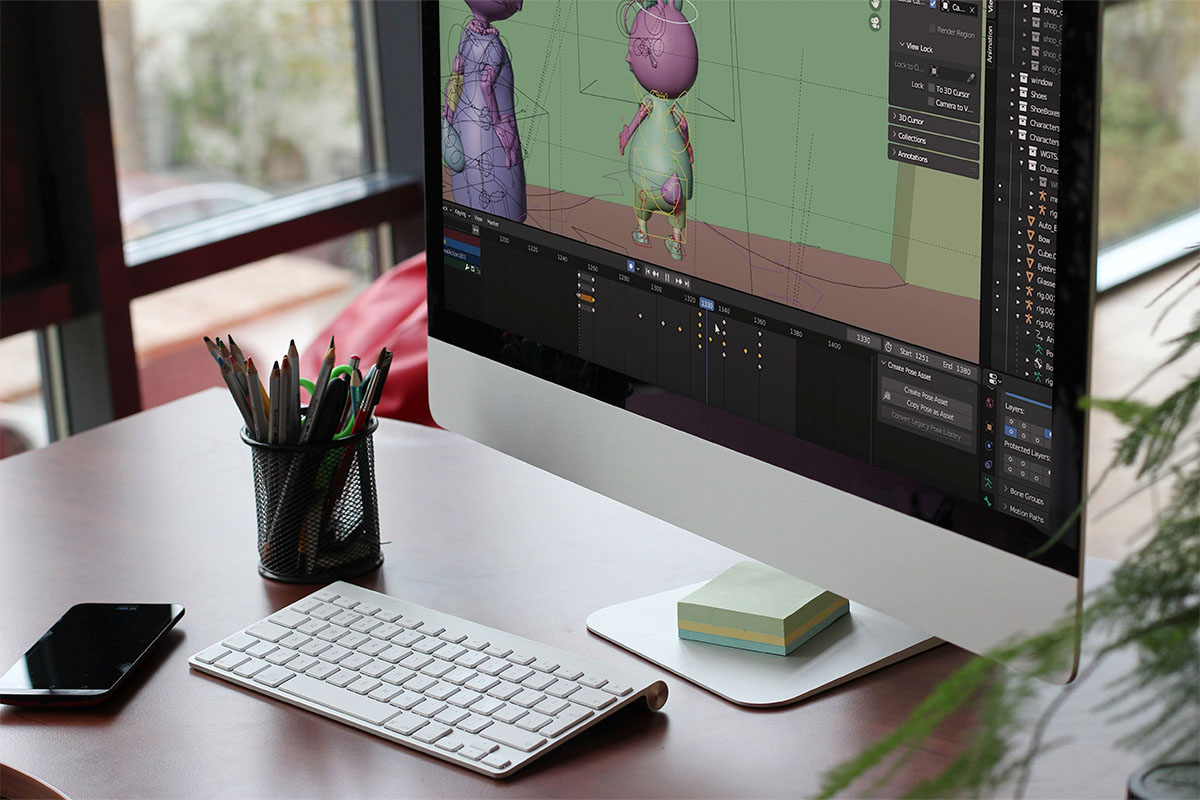
Animation Companies in South Africa: Character vs. Object Rigging
Let’s say you are looking to create a 3D animated video to demonstrate your product’s functionality or perhaps recreate a complex scenario, like an accident reconstruction for training purposes. You have got the perfect idea, but as soon as the conversation turns to the technical side—things like “rigging” or “control systems”—you are left scratching your head. What does rigging actually mean in the context of 3D animation? How does it impact the final product, and why should you care? In this article, we will break down the difference between character rigging and object rigging, two important techniques in the 3D animation process. Understanding these concepts will help you better grasp how animation studios approach your project, with animation companies in South Africa often using their expertise in rigging to create animations that are both technically precise and highly functional for business needs.
What Is Rigging in 3D Animation?
Before we jump into the specifics of character and object rigging, it is helpful to define what rigging means in the context of 3D animation. Rigging is the process of creating a skeleton-like structure that allows a 3D model to move. This skeleton consists of bones or joints connected by hierarchies, and it allows animators to control the movement and deformation of the model. The skeleton is then ‘skinned’ to a 3D model, which ensures that the model deforms appropriately as the rig is manipulated. Rigging is an essential step between modelling (creating the 3D object) and animation (making it move).
Character Rigging
Character rigging is one of the most intricate areas of rigging. In character rigging, animators create a digital skeleton for characters, typically human or animal, which is then used to animate lifelike movements. This process requires a detailed understanding of how biological systems work in order to simulate realistic motions.
Key Components of Character Rigging
- Bones and Joints
In character rigging, the bones and joints form the core of the skeleton. These bones are strategically placed to mimic the human or animal anatomy, allowing for realistic bending and stretching. For example, in human characters, bones are placed in the arms, legs, spine, neck, and head. Joints are used to connect these bones, providing the range of movement needed for animation. - Skinning
Skinning is the process of attaching the 3D mesh (the surface of the model) to the skeleton. It ensures that when the bones move, the 3D model moves with them. During this process, weight painting is used to determine how much influence each bone has over specific parts of the model. This step is crucial, as improper skinning can lead to unnatural deformations. - Control Systems
A key element in character rigging is the creation of control systems. These are user-friendly interfaces that animators use to manipulate the bones and joints. Without a proper control system, animating a character can be a tedious and complex task. Controls often include sliders, buttons, and handles that allow animators to adjust the rig and pose the character with ease.
Challenges of Character Rigging
Character rigging is typically more complex than object rigging due to the detailed movements required for characters, such as facial expressions and muscle deformations. Furthermore, characters often need to perform a wide range of motions, from walking and running to expressing emotions. This means that the rig must be highly flexible and adaptable.
Animation companies in South Africa often face these challenges head-on, creating character rigs that are both advanced and efficient. With the rising demand for animated content in both film and video games, South African animators are becoming increasingly proficient in these techniques.
Object Rigging
Object rigging involves the creation of rigs for inanimate objects, which can range from vehicles and machinery to everyday objects. The goal of object rigging is to allow objects to move and interact with their environments, but with far fewer degrees of freedom compared to characters.
Key Components of Object Rigging
- Hierarchical Structures
In object rigging, animators create a hierarchy of parts. For example, if an animator is rigging a car, they will create different parts of the car as separate components (wheels, doors, etc.) connected in a parent-child structure. This structure helps control the movement of parts in relation to one another. For instance, the wheels might rotate when the car moves, but the body of the car will stay stationary. - Constraints and Drivers
Unlike character rigs, object rigs often involve the use of constraints and drivers to control motion. Constraints are rules that limit the movement of certain parts. For example, a constraint might prevent the doors of a car from rotating beyond a certain angle. Drivers, on the other hand, control the values of specific properties, such as speed, rotation, and position, based on other actions. These help ensure the mechanical movements of objects stay realistic.
Challenges of Object Rigging
Object rigging is generally less complex than character rigging in terms of the range of motions required. However, animating mechanical objects with proper constraints can be a delicate task. The challenge lies in ensuring that the interactions between various parts of the object are smooth and realistic. For instance, a robotic arm must move in a way that respects the laws of physics and motion.
Animation companies in South Africa that specialise in video production and often create 3D accident recreation videos are frequently tasked with building realistic object rigs for everything from vehicles to machinery, which requires a unique set of skills and tools.
Character Rigging vs. Object Rigging: A Comparative Analysis
While both types of rigging share the same foundational principles, there are several differences between character and object rigging.
Complexity and Detail
Character rigging tends to be more complex than object rigging because of the need to simulate lifelike movements and deformations. Characters often require a higher level of detail in terms of joints, bones, and muscle simulation. By contrast, object rigging is generally more straightforward, especially when dealing with rigid objects like vehicles or buildings.
Deformation and Movement
In character rigging, the focus is on achieving natural deformation of the model as the bones move. For example, a character’s skin must deform properly around the elbows and knees when they bend their arms and legs. This is something that is not as prominent in object rigging, where the movement is often more mechanical and involves less deformation.
Control Systems
Control systems for character rigs tend to be more sophisticated due to the wide range of possible movements. Animators need systems that allow them to control complex motions like facial expressions, hand gestures, and full-body actions. Animation companies in South Africa working on character rigging often invest in highly detailed control systems to streamline complex animation tasks. Object rigs, on the other hand, use simpler control mechanisms focused on the motion of individual parts or components.
Conclusion
Rigging might not be the part of the animation process that steals the show, but it’s the reason your animation moves in the first place. Character rigging and object rigging each have their own set of challenges, but both are absolutely necessary for creating realistic and functional animation.
As animation companies in South Africa continue to refine their techniques, they are making sure that every movement, from a character’s smile to the precise turn of a gear, serves its purpose. So, the next time you discuss rigging in a project, remember: it’s not just about getting things to move—it’s about getting them to move the right way.
Want your animation to move just right? Contact Sound Idea Digital, and let’s get started.
We are a full-service Web Development and Content Production Agency in Gauteng specialising in Video Production, Animation, eLearning Content Development, Learning Management Systems, and Content Production.
Contact us for a quote. | enquiries@soundidea.co.za | https://www.soundideavideoproduction.co.za| +27 82 491 5824 |

